News
Marine PAs: A solid base directory in place
View(s):- WNPS hopes to build on this robust fact base
By Kumudini Hettiarachchi
The need was great. It was felt acutely when marine expert Dr. Malik Fernando attempted to find information on Sri Lanka’s Marine Protected Areas (MPAs).
Little information was available and that too was “scattered” all over the place, says Dr. Fernando, who then took up his concerns with the Marine Sub Committee of the Wildlife and Nature Protection Society (WNPS) in 2021.
Then started the arduous task of compiling the ‘Directory of MPAs’. Now completed, the Directory was launched on Thursday (December 14) at the WNPS’s monthly lecture on ‘Rewilding’ – 25 years of land restoration on the borders of the Wasgamuwa National Park.
Delving into how he and his team set about gathering information for the Directory, Dr. Fernando, a reputed diver and marine naturalist, talks of how rigorously they “trawled” and collected information from authentic sources.
The first tap of the keys was on the Department of Wildlife Conservation (DWC) website, for it was the guardian of all PAs including MPAs. The team also garnered information from the IUCN (International Union for Conservation of Nature) and more.
Dr. Fernando says that what came up mostly was “old stuff” and even the definition of an MPA was loosely covered………and so they went with the IUCN definition.

Dr. Malik Fernando
It states: “Any area of inter-tidal or sub-tidal terrain, together with its overlying water and associated flora, fauna, historical and cultural features, which has been reserved by law or other effective means to protect part or all of the enclosed environment.”
The definition is broad and includes many coastal ecosystems, such as estuaries, lagoons, salt marshes, mangroves and beaches as well as true marine ecosystems and oceanic waters, it is understood. MPAs could vary from large fishery reserves and multiple-use parks to small, strict, conservation zones and sanctuaries depending on the habitats.
“PAs are declared by legislative instruments to preserve the relevant natural environment of the area and its animal and plant inhabitants as well as its mineral and cultural content. It is the whole landscape,” says Dr. Fernando.
He points out that one aim is to protect unique vegetation assemblages and the habitats of animals and plants threatened with extinction as a result of habitat loss or due to excessive human exploitation. Another aim is to preserve the watershed of reservoirs or continuity of habitats for wildlife in the face of dwindling forest cover as a result of expanding human settlements.
The team has used an ‘artificial’ classification based on five criteria to enable the selection of PAs declared under the Fauna and Flora Protection Ordinance (FFPO), for inclusion in the Directory.
The five criteria are:
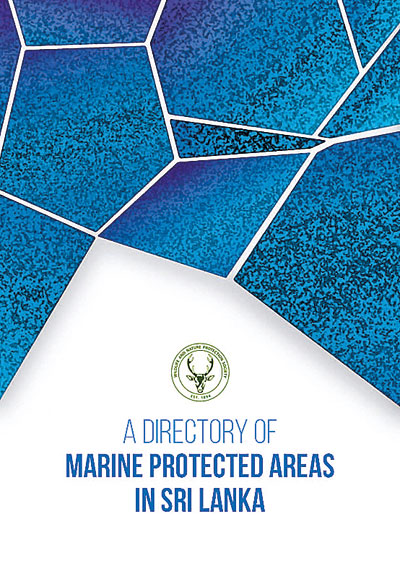
The Director cover
Criterion 1 – The area protected is largely sea and may contain islands. They are Hikkaduwa Marine National Park; Pigeon Islands Marine National Park; Adam’s Bridge Marine National Park; Bar Reef Marine Sanctuary; Rumassala Sanctuary; the Great Basses & Little Basses Marine Sanctuary; and Kayankerni Marine Sanctuary.
Criterion 2 – The area protected is largely terrestrial (land), but abuts the coastline that is also protected, extending to the adjacent sea area or not. They are Delft Island National Park and Ussangoda National Park, including a 100m and 500m wide belt of near shore water respectively.
Criterion 3 – The area protected is largely terrestrial, abuts the coastline and contains coastal lagoons and wetlands extending for varying distances inland. They are Chundikulam National Park; Nayaru Nature Reserve; Nandikadal Nature Reserve; Nagarkovil Nature Reserve; Vidattaltivu Nature Reserve; Vankalai Sanctuary; Telwatte Sanctuary; Kalametiya – Lunama Sanctuary; Panama – Kudimbigala Sanctuary; Seruvila – Allai Sanctuary; Kokkilai Sanctuary; Yala National Park; Kumana National Park; and Bundala National Park.
Criterion 4 – Islands in the sea that alone are protected, with evidence of corals and other biodiversity including seagrass meadows in the surrounding waters that may not themselves be protected. They are Paravitivu (Paraitivu) Island Sanctuary; Rocky Islets Sanctuary; and the Great and Little Sober Islands Sanctuaries.
Criterion 5 – Protected beaches that abut unprotected habitats with important wetlands. They are Godawaya Sanctuary and Rekawa Sanctuary.
As WNPS Vice President Graham Marshall who is Chair of the Marine Sub Committee says this initiative was mooted because it was felt that whilst there is extensive awareness and knowledge of terrestrial protected areas, there is very limited awareness of the marine protected areas. This status, in an island whose ocean area is 7.5 times that of its land area, is rather “alarming”.
While the Directory aims to bridge this lacuna, he says that it will serve as a “robust fact base” to ensure that these areas, which have been protected based on sound scientific rationale, are not compromised in the interest of competing development activity.
Even though the directory is a reasonably extensive degree of historical information, Mr. Marshall says that it falls short in recording the most recent and updated status of these areas due to the lack of updated reports, among many reasons.
This is why he invites like-minded people who visit these areas to engage with the WNPS to update the directory.
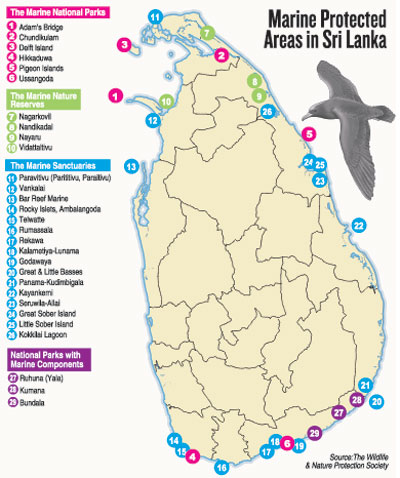
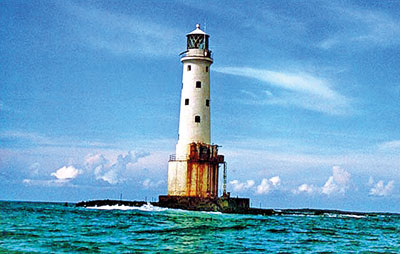
The Great Basses Lighthouse

The Pigeon Islands National Park
| Why is a Directory of MPAs vital? With major threats brought on by unplanned development, much pressure to de-gazette Protected Areas (PAs) for development and encroachment, it is essential to focus on why MPAs had been declared in the first place, says Dr. Malik Fernando. Citing a recent case, he says that it was important to find out why the Vidattaltivu Nature Reserve was thus declared in the light of the National Aquaculture Development Authority (NAQDA) wanting to set up aquaculture farms in the area, claiming that it was “bare”. Dr. Fernando, however, argues that even though the area may seem bare, it is in fact the buffer between the mangroves and areas of human habitation. Any disturbance in this bare buffer would cause serious consequences. He concedes that finding the “logic” behind the decision to declare an MPA was near-impossible. For, the gazettes declaring MPAs only had the boundaries and extent of land of such PAs but not the reason why they needed protection. While the gazettes were with the DWC, it was the Cabinet papers seeking such declaration that had the reasons and those papers were now with the state ministries. Searches were time-consuming and difficult. So, the team also had a close look scientific research papers.
| |
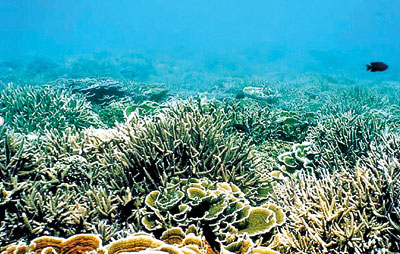
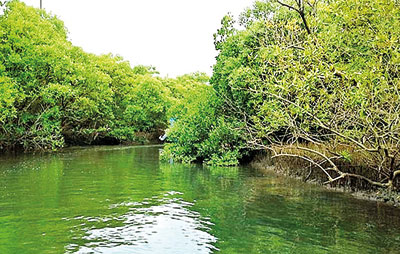
The best way to say that you found the home of your dreams is by finding it on Hitad.lk. We have listings for apartments for sale or rent in Sri Lanka, no matter what locale you're looking for! Whether you live in Colombo, Galle, Kandy, Matara, Jaffna and more - we've got them all!

